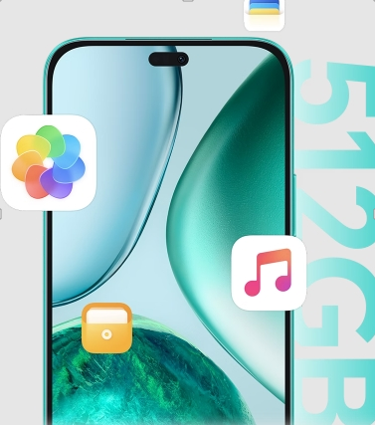Why Does My Phone Get Slower Over Time?

Smartphones don’t age like fine wine—they slow down noticeably after a year or two of use. This frustrating phenomenon happens to nearly every device, regardless of its initial speed or price tag. The reasons range from software changes to physical hardware limitations, all contributing to that laggy experience when opening apps or switching between tasks. While some slowdown is unavoidable, understanding what causes it can help you delay the inevitable and keep your phone running smoothly for longer. In this article, we’ll explore the key reasons behind smartphone slowdowns and provide practical solutions to revive your device’s performance.
Storage Bloat: The Silent Performance Killer
A nearly full storage drive is one of the biggest culprits behind a sluggish phone. When your device’s storage reaches 80-90% capacity, the operating system struggles to manage files efficiently, leading to slower app launches and system freezes. This happens because smartphones use flash storage, which needs empty space to perform background operations like caching and file management. Without this breathing room, even simple tasks become delayed. Apps also contribute to storage bloat over time. Many applications store temporary files, cached data, and offline content that gradually eat up space. Social media apps are particularly notorious, with some accumulating several gigabytes of cached images and videos if left unchecked.
Software Updates: Help or Hindrance?
Software updates are meant to improve performance and security, but they can sometimes have the opposite effect. Newer operating system versions often introduce additional features and visual enhancements that demand more processing power. If your phone’s hardware wasn’t designed with these future updates in mind, the added strain can make the device feel slower over time. This is especially true for budget or older phones that receive major OS upgrades beyond their original specifications. Another issue is app compatibility. As developers optimize their software for newer devices, older phones may struggle to run the latest app versions smoothly.

Battery Degradation and Performance Throttling
Lithium-ion batteries naturally degrade over time, losing their capacity to hold a full charge. After about 500 charge cycles (roughly two years of daily charging), most batteries retain only 80% of their original capacity. To prevent unexpected shutdowns, phones automatically throttle performance when battery health drops significantly. This means your processor runs slower to conserve energy, resulting in noticeable lag during intensive tasks. This throttling is particularly apparent when playing games, using camera apps, or multitasking. Some manufacturers implement aggressive power management to extend battery life, which can make the phone feel artificially slow even when fully charged.
See also: IT Support Services for Reliable and Efficient Technology Support
Background Processes Running Amok
Modern smartphones constantly run background processes for syncing data, checking notifications, and maintaining system functions. While these are necessary, poorly optimized apps can abuse this capability, consuming RAM and CPU resources even when you’re not actively using them. Social media apps are frequent offenders, constantly refreshing feeds and tracking location in the background. Over time, as you install more apps, these background processes multiply, competing for limited system resources. This leads to slower performance, shorter battery life, and increased heat generation. Some apps even launch additional processes when you open them, creating a cascade of system demands that overwhelm older hardware.
Hardware Aging: The Physical Limits
All electronic components degrade with use, and smartphones are no exception. The processor’s transistors wear out slightly with each operation, memory cells become less reliable, and storage chips slow down after thousands of read/write cycles. While these changes happen gradually, their cumulative effect becomes noticeable after a few years. Heat accelerates this aging process. Intensive tasks like gaming or video editing generate heat that stresses components over time. Similarly, constantly charging your phone to 100% or letting it overheat in direct sunlight can shorten its lifespan. Dust accumulation in cooling systems and minor physical damage from drops also contribute to gradual performance degradation.
How to Speed Up Your Slow Phone
The Most Effective Storage Cleanup Methods
Freeing up storage space is one of the quickest ways to improve performance. Start by deleting unused apps—many phones have a “last used” filter in settings to identify candidates. Next, clear app caches (not just data) for space-hogging applications like social media and browsers. Use your phone’s built-in storage analyzer to identify and remove large files like duplicate photos or downloaded videos. For long-term maintenance, enable automatic cloud backup for photos and videos, then remove local copies. Many cloud services offer optimized storage options that keep smaller versions of files on your device while storing originals online. Also consider moving media files to an external SD card if your phone supports expandable storage.
Disable Non-Essential Background Apps
Not all background apps need to run constantly. Start by restricting background activity for non-essential apps in your phone’s battery or app settings. Social media, shopping, and news apps are prime candidates for restrictions. Disable automatic updates in app stores and set messaging apps to fetch rather than push notifications if possible. Some system apps can also be safely limited. Location services, Bluetooth scanning, and automatic backups often run unnecessarily in the background. Use your phone’s developer options (if enabled) to view running services and identify resource hogs. Be cautious with system processes—disabling the wrong service could cause instability.
Choose the Right Time to Restore Factory Settings
If software issues persist after other optimizations, a factory reset can provide a fresh start. This erases all data and returns the phone to its original state, eliminating accumulated software glitches and conflicts. Before resetting, back up important data and note your app logins. After resetting, reinstall only essential apps initially to monitor performance. Gradually add other apps while watching for slowdowns—this helps identify problematic software. A reset is particularly effective for phones that have received multiple major OS updates, as it clears out incompatible system remnants.
Conclusion
While all phones slow down eventually, smart usage habits can significantly prolong their useful life. Regular storage maintenance, careful app management, and avoiding extreme temperatures go a long way in preserving performance. When choosing a new device, consider models with robust hardware that can handle future software demands, like the HONOR X8c with its massive 512GB storage and smooth 16GB (8+8) equivalent RAM experience—features that help delay storage-related slowdowns and keep performance consistent over time. Remember that some slowdown is natural as technology advances and software becomes more demanding. With proper care and occasional optimization, you can keep your phone running smoothly for years before needing an upgrade.




